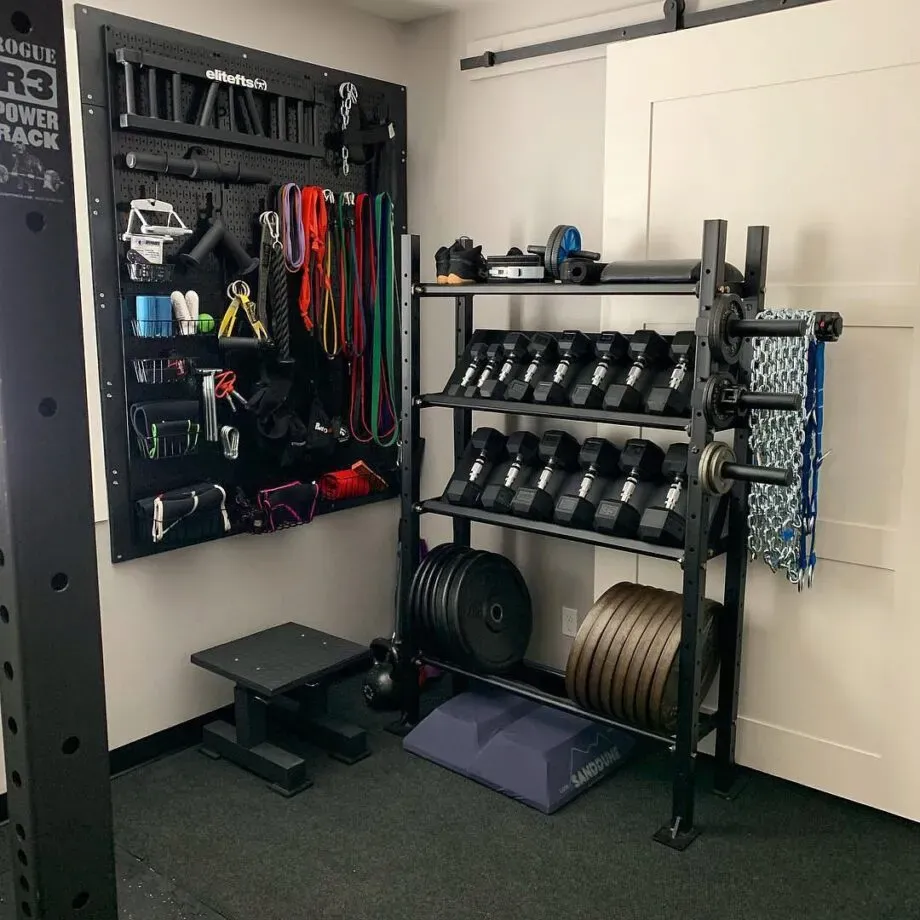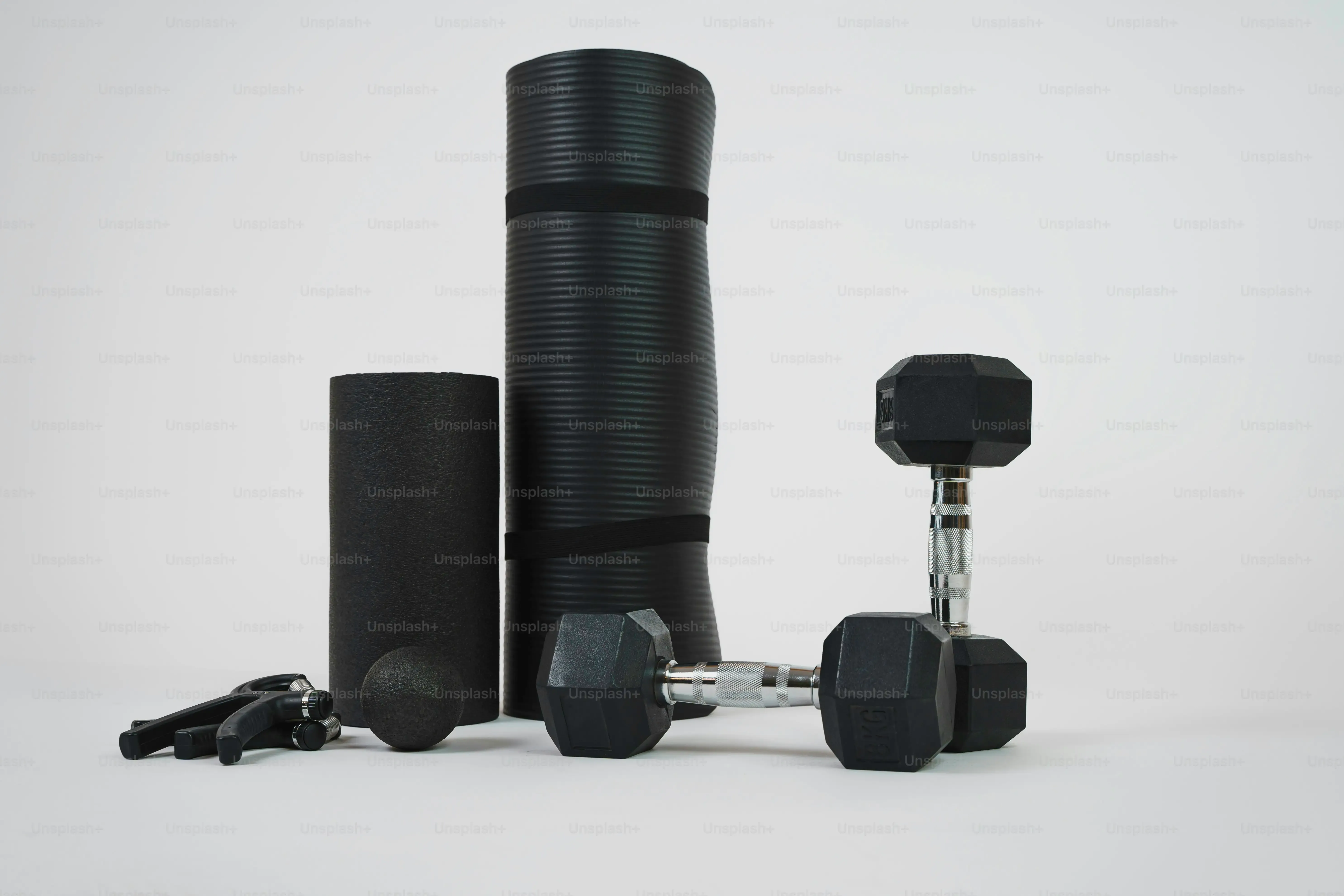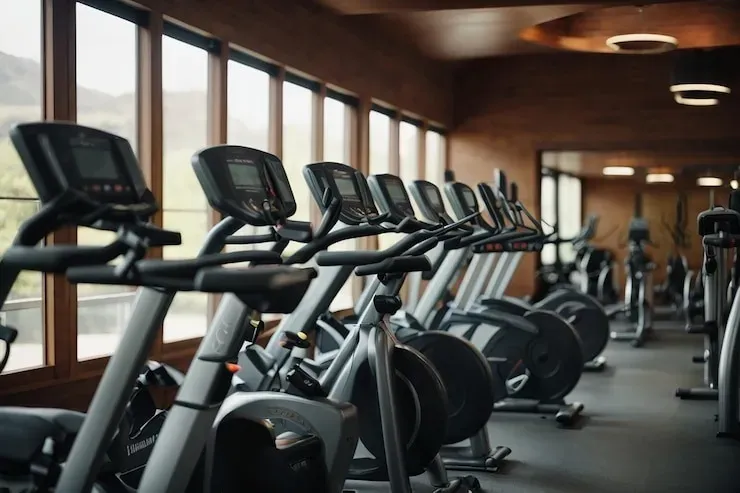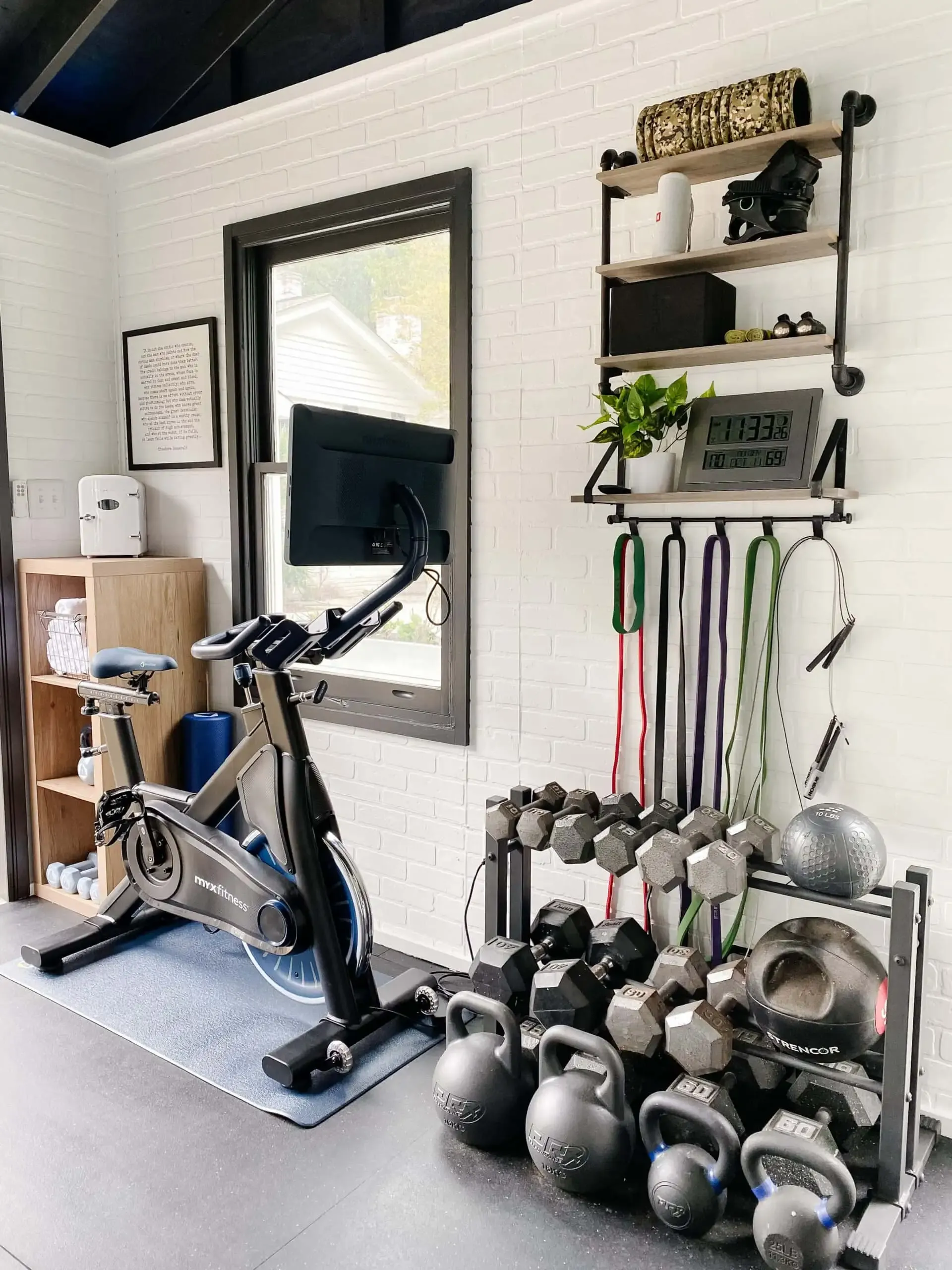Table of Contents
Tired of paying for a gym membership you barely use? Sick of waiting in line for the squat rack while someone scrolls through TikTok? Maybe the commute just feels like another workout you didn't sign up for. It's a common frustration, and it leads many people to consider bringing the fitness experience home.
Ditching the Gym Membership: Why Build a Home Gym on a Budget?
Ditching the Gym Membership: Why Build a Home Gym on a Budget?
Let's talk about that monthly fee. It's like a leaky faucet draining your wallet, isn't it? You sign up with grand intentions, maybe hit it hard for a few weeks, and then life happens. Work gets busy, the weather turns sour, or you just can't face the drive. Suddenly, you're paying fifty, sixty, maybe even a hundred bucks a month to store your gym bag in the closet and feel guilty every time you pass the building. That money adds up fast. Building a home gym on a budget isn't just about saving cash on equipment; it's about reclaiming that recurring expense and investing it into something you can use anytime, without the commute, the crowds, or the judgment from the person who clearly lives there. It's convenience you own, not rent, and the potential for long-term savings makes Ditching the Gym Membership: Why Build a Home Gym on a Budget? a pretty compelling argument.
Building Your Core: Essential Home Gym Equipment on a Budget
Building Your Core: Essential Home Gym Equipment on a Budget
Starting with the Bare Minimum (and Why It's Enough)
so you've decided to ditch the sweaty masses and build your own fitness sanctuary. The first step in Building Your Core: Essential Home Gym Equipment on a Budget isn't buying a monster rack. It's realizing how much you can do with almost nothing. Seriously. Your own bodyweight is the most underrated piece of equipment you own. Push-ups, squats, lunges, planks – these are foundational movements that build real strength and don't cost a dime. Adding a decent mat for floor work and maybe some resistance bands, which you can snag for under twenty bucks, opens up even more possibilities for a full-body workout. Don't underestimate the power of mastering the basics before you chase the shiny stuff.
Adding Versatility: Bands, Bells, and Bars
Once you've got the bodyweight thing down, you'll want to add some resistance. This is where Building Your Core: Essential Home Gym Equipment on a Budget gets interesting. Resistance bands, as mentioned, are ridiculously versatile and portable. They add challenge to squats, presses, and pulls, and take up zero space. Next up, consider a kettlebell or a few dumbbells. You don't need a full rack of twenty pairs. Start with one or two weights you can handle for multiple exercises. A single kettlebell allows for swings, cleans, presses, and squats. A pair of adjustable dumbbells gives you a range of weights without clutter. Look for used options to save even more cash.
Budget Item | Avg. Cost Range (New) | Key Benefits |
|---|---|---|
Resistance Bands Set | $15 - $40 | Portable, versatile, good for rehab/warm-ups |
Single Kettlebell | $30 - $80 (depends on weight) | Full body movements, cardio & strength combined |
Adjustable Dumbbells (Pair) | $50 - $150 | Space-saving, multiple weight options |
The Pull-Up Bar and Why You Need It
If there's one piece of equipment that gives you the most bang for your buck in Building Your Core: Essential Home Gym Equipment on a Budget, it's a pull-up bar. Doorway versions are cheap, easy to install (usually), and let you work your back, biceps, and grip like almost nothing else. Pull-ups are tough, no doubt, but even just hanging from the bar builds grip strength, which carries over to everything else. You can also use it for inverted rows if full pull-ups are out of reach. Combine this with your bands, kettlebell, or dumbbells, and you've got the foundation for a seriously effective workout space that didn't require taking out a loan.
Hunting for Value: Where to Find Affordable Home Gym Equipment
Hunting for Value: Where to Find Affordable Home Gym Equipment
Scouring the Digital Junkyard: Online Marketplaces
Alright, so you've figured out you need something more than just floor space. Now, where do you find home gym equipment on a budget that isn't a total rip-off? The internet is your first hunting ground, but think less shiny retail sites and more digital junkyard. Places like Craigslist, Facebook Marketplace, and OfferUp are goldmines if you're patient and willing to haggle a bit. People upgrade, move, or just lose interest, and their perfectly good, slightly dusty weights and benches become your opportunity. You might find a fantastic deal on a squat rack someone bought and barely used, or a set of dumbbells for a fraction of the new price. Just be smart – inspect the gear before you hand over cash, and maybe bring a friend if you're meeting someone you don't know.
Hitting the Pavement: Local Finds and Secondhand Shops
Don't just rely on the digital world for finding home gym equipment on a budget. Sometimes the best deals are right under your nose, or at least down the street. Check out local sporting goods consignment shops – they often have a rotating stock of used equipment. Garage sales and estate sales can also yield unexpected treasures. I once scored a sturdy, old-school weight bench at an estate sale for twenty bucks because the family just wanted it gone. It wasn't pretty, but it was solid steel. These places require a bit more legwork and luck, but the payoff can be significant. You're bypassing shipping costs and getting a real look at the item before buying.
Where to Look for Used Gear
- Facebook Marketplace
- Craigslist
- OfferUp
- Local Consignment Stores
- Garage and Estate Sales
- Play It Again Sports (or similar chains)
Playing the Long Game: Sales and Budget Brands
If buying used gear gives you the creeps, or you can't find what you need, timing and research are key for finding new home gym equipment on a budget. Black Friday, holiday sales, and end-of-season clearances are obvious times to look for discounts. Sign up for email lists from budget-friendly fitness retailers. Brands like Titan Fitness, Rep Fitness (their lower-end lines), and even Amazon Basics offer surprisingly decent quality equipment at prices far below the big names. They might not have all the bells and whistles, or the absolute highest weight capacities, but for most home users, they're more than sufficient to get the job done without emptying your bank account. Patience, research, and knowing when and where to look will save you a bundle.
Small Space, Big Gains: Setting Up Your Budget Home Gym Area
Small Space, Big Gains: Setting Up Your Budget Home Gym Area
Making the Most of Tight Corners
so you don't have a dedicated basement or a two-car garage to turn into your fitness palace. Most of us don't. That doesn't mean you can't build a functional home gym on a budget. It just means you have to be smart about your space. Think vertically. Doorway pull-up bars, wall-mounted racks that fold away, and even resistance bands that hang on a hook – these are your friends when square footage is limited. Look for equipment that does double or triple duty. Adjustable dumbbells replace a whole rack of weights. A sturdy bench that can incline, decline, and be stored upright is a game-changer. Don't clutter up your living room; find a corner, a patch of wall, or even a closet you can dedicate to getting sweaty. The goal isn't a showroom; it's a usable space that fits your life and budget.
Space-Saving Budget Equipment
- Doorway or Wall-Mounted Pull-Up Bar
- Adjustable Dumbbells
- Resistance Bands
- Foldable Weight Bench
- Suspension Trainer (like TRX alternatives)
- Exercise Mat
Smart Buys: Upgrading Your Home Gym Equipment on a Budget
Smart Buys: Upgrading Your Home Gym Equipment on a Budget
What's a Smart Upgrade Anyway?
so you've got the basics covered. You're doing bodyweight moves, swinging that kettlebell, maybe even banging out a few pull-ups. You're getting stronger, but you feel a plateau coming, or maybe you just want to mix things up. This is where Smart Buys: Upgrading Your Home Gym Equipment on a Budget comes in. An upgrade isn't just buying more stuff. It's adding a piece of equipment that significantly expands your training options or makes your existing setup more effective and safer, without blowing through your savings. Think about what exercises you *can't* do right now that would really help you progress. That's your target.
For example, maybe you're stuck doing floor presses and your shoulders are starting to complain. A weight bench, even a basic flat one, opens up bench presses, rows, and seated movements. Or perhaps you've maxed out your single kettlebell on swings, but it's too light for goblet squats. A heavier kettlebell, or a second one, is a smart move. The goal is strategic addition, not impulsive accumulation.
Adding Key Pieces That Unlock New Movements
When you're ready to add something new, focus on pieces that give you the biggest return on your investment for Smart Buys: Upgrading Your Home Gym Equipment on a Budget. A good, sturdy weight bench is often high on the list. It doesn't need to be fancy or adjustable in a million ways, but it should be stable enough to handle you and the weight you lift. Another great option is a set of weight plates and a barbell if you started with just dumbbells. Barbell training allows for heavier lifts on compound movements like squats, deadlifts, and overhead presses, which are critical for building overall strength. Look for standard Olympic size if possible, as it's more common and easier to find used plates later.
Suspension trainers, like TRX alternatives, are also incredibly versatile and take up almost no space. You can hang them from a door frame or a pull-up bar and work your entire body using your own weight, adjusting the difficulty by changing your angle. They're great for core work, rows, chest presses, and even single-leg exercises.
Potential Smart Upgrades
- Sturdy Weight Bench (Flat or Adjustable)
- Barbell and Weight Plates
- Heavier Kettlebell or Dumbbells
- Suspension Trainer
- Dip Station Attachment (if you have a rack)
Prioritizing Quality and Safety Over Quantity
It's tempting to buy a bunch of cheap, flimsy gear when you're focused on Smart Buys: Upgrading Your Home Gym Equipment on a Budget. Resist that urge. A wobbly bench or a barbell with collars that won't stay put isn't just annoying; it's dangerous. When you're upgrading, even on a budget, try to get the best quality you can afford for the pieces that bear significant weight or support your body. Read reviews, check weight capacities, and if buying used, inspect the welds and overall condition carefully. Sometimes paying a little bit more upfront for a solid piece means you won't have to replace it next year, and more importantly, you won't get injured using it.
Think about it this way: that extra fifty bucks for a bench that doesn't feel like it's going to collapse is an investment in your safety and your ability to train consistently. It's not about having the most equipment, but having the *right* equipment that allows you to train effectively and safely within your space and budget.
Your Budget Home Gym: More Than Just Equipment
So, there you have it. Building a home gym on a budget isn't about settling for less; it's about being smart with your money and space. You've seen that the core equipment you need is relatively simple, and there are plenty of ways to find it without emptying your bank account. It requires a bit of searching, maybe some patience, and a willingness to look beyond the glossy ads. But the payoff? The freedom to train when you want, how you want, without the commute or the membership fees. It's a solid investment in your health that doesn't require a massive financial leap. Now go build that space and get to work.